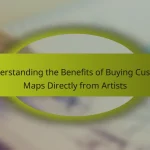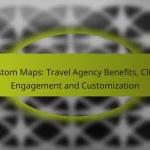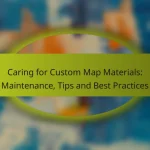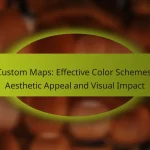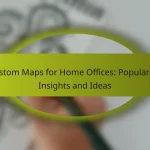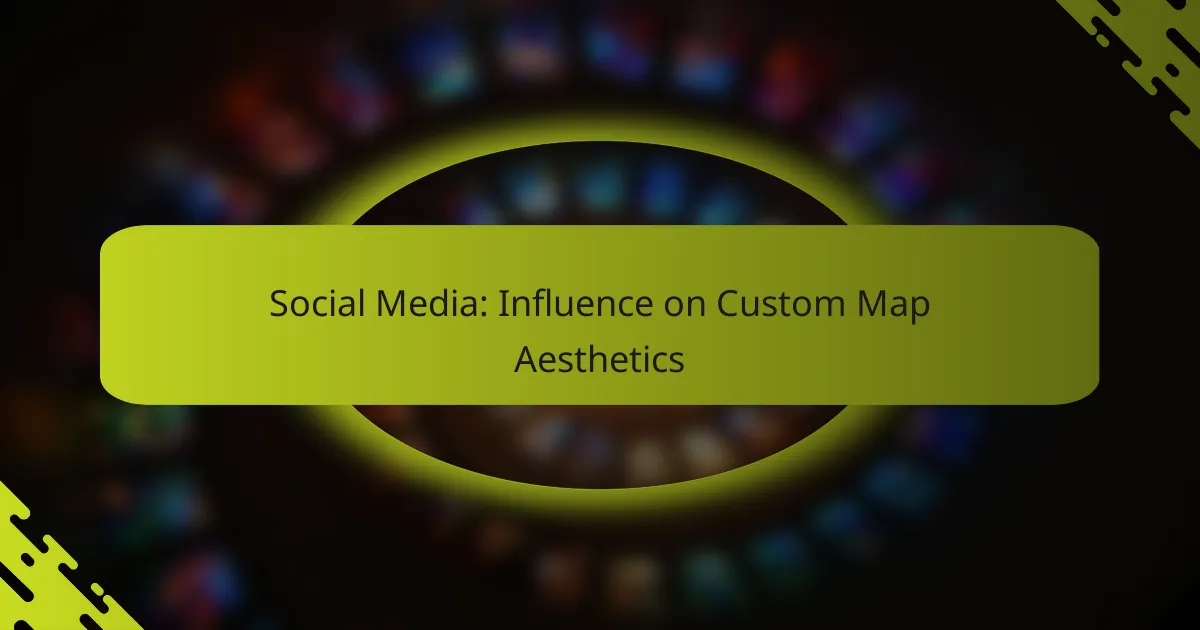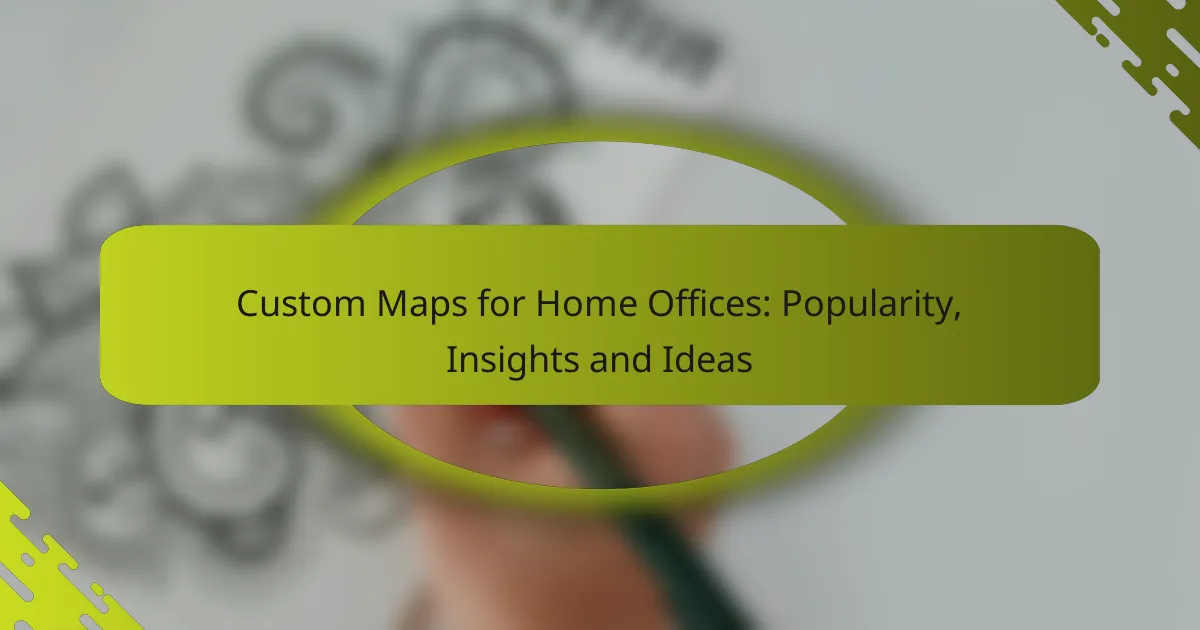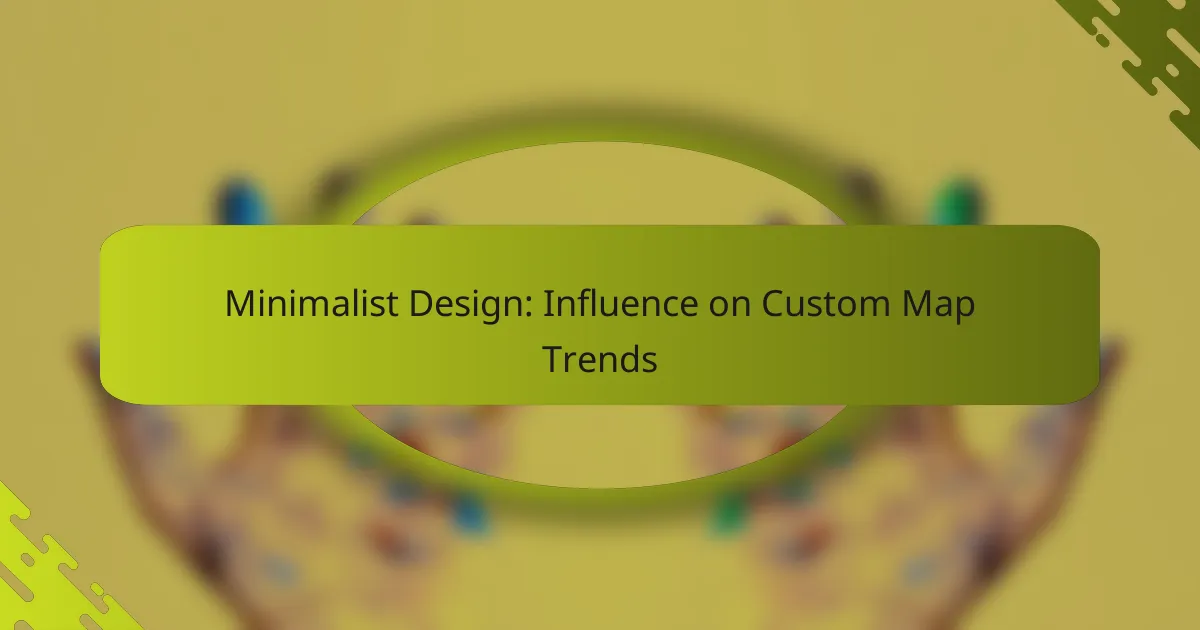Social media plays a pivotal role in shaping the aesthetics of custom maps, particularly in urban environments, by popularizing visual trends that captivate users. Platforms such as Instagram and Pinterest are instrumental in inspiring design choices, encouraging the integration of appealing elements that enhance the overall attractiveness and shareability of maps.
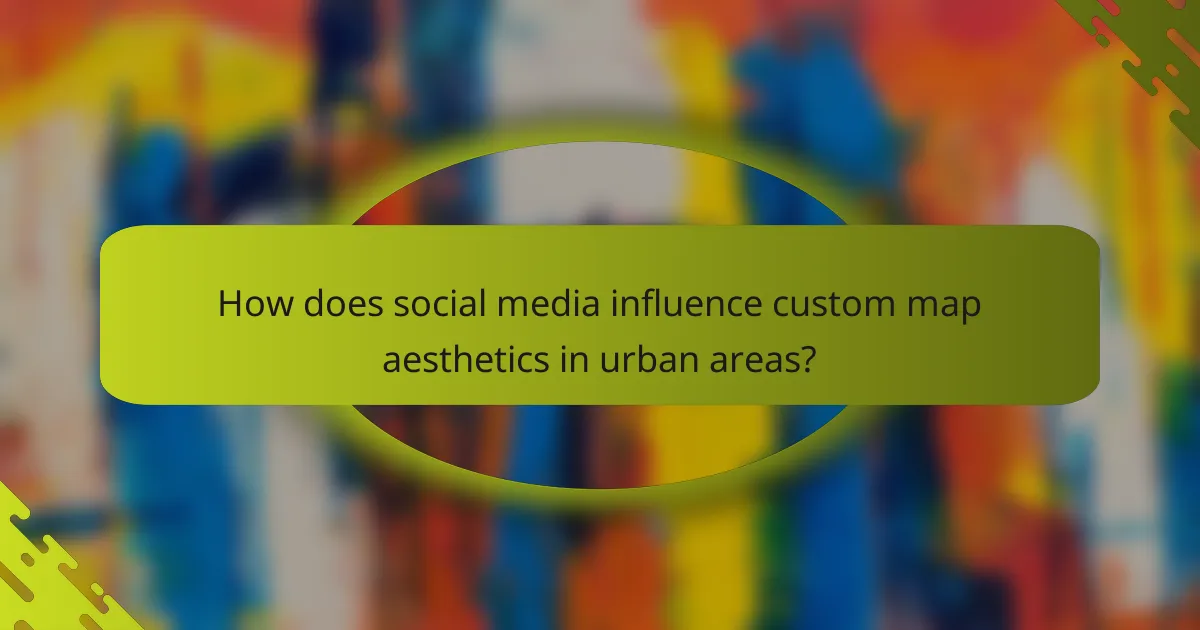
How does social media influence custom map aesthetics in urban areas?
Social media significantly shapes custom map aesthetics in urban areas by promoting visual trends and styles that resonate with users. Platforms like Instagram and Pinterest serve as key sources of inspiration, leading to the adoption of specific design elements that enhance the appeal of maps.
Visual trends from Instagram
Instagram is a powerful platform for showcasing visually striking maps, often featuring vibrant colors and unique layouts. Users tend to favor maps that incorporate artistic elements, such as hand-drawn illustrations or overlays of popular landmarks, which create a more engaging experience.
Common visual trends include the use of pastel palettes, minimalist designs, and the integration of typography that reflects local culture. These aesthetics not only attract attention but also encourage sharing, further amplifying their influence.
Popular styles on Pinterest
Pinterest serves as a hub for discovering and saving custom map styles, with users often curating boards that highlight various design approaches. Popular styles include vintage maps, watercolor effects, and infographics that combine geographical data with artistic flair.
Maps that tell a story or provide thematic insights, such as food trails or historical tours, are particularly favored. This trend encourages map creators to think creatively about how to present information visually while maintaining clarity and usability.
User-generated content impact
User-generated content plays a crucial role in shaping custom map aesthetics, as individuals share their creations and ideas across social media platforms. This sharing fosters a community of map enthusiasts who inspire one another and push the boundaries of traditional map design.
As users experiment with different styles and techniques, they contribute to a diverse range of aesthetics that reflect local identities and preferences. Engaging with this content can provide valuable insights for map creators looking to stay current with trends and user expectations.
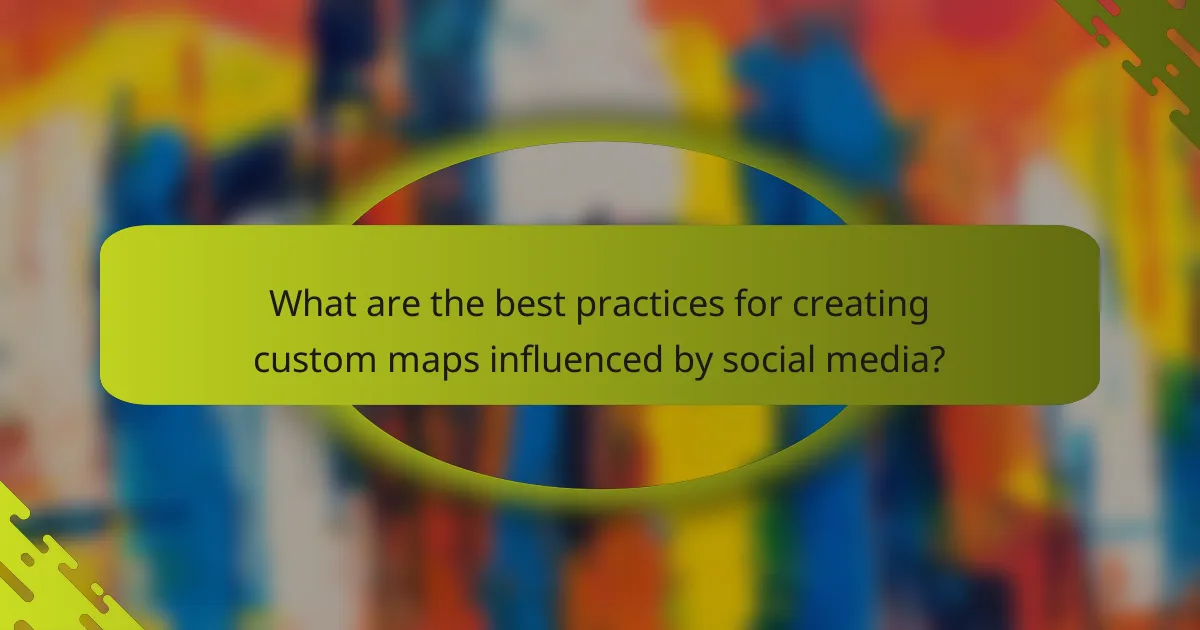
What are the best practices for creating custom maps influenced by social media?
To create custom maps that resonate with social media trends, focus on visually appealing designs, relevant content, and engagement strategies. Incorporating popular aesthetics and local elements can enhance the map’s appeal and shareability.
Utilizing color palettes
Selecting the right color palette is crucial for creating visually striking custom maps. Use colors that are trending on social media platforms, such as pastels or vibrant hues, to attract attention. Tools like Adobe Color or Coolors can help you find harmonious color schemes that fit your map’s theme.
Consider the psychological impact of colors; for instance, blue often conveys trust, while green can evoke nature. Aim for a palette that aligns with the map’s purpose and the emotions you want to evoke in viewers.
Incorporating popular landmarks
Including well-known landmarks can significantly enhance the relevance of your custom map. Identify local attractions that are frequently shared on social media, such as parks, museums, or iconic buildings, and feature them prominently. This not only makes the map more relatable but also encourages users to share it with their networks.
When selecting landmarks, consider their visual appeal and cultural significance. Highlighting unique or lesser-known spots can also attract interest, especially if they have a strong local following on platforms like Instagram or TikTok.
Engaging with local influencers
Collaborating with local influencers can amplify the reach of your custom map. Identify influencers who have a strong presence in your target area and align with your map’s theme. They can provide insights into popular spots and help promote the map to their audience.
When engaging with influencers, consider offering them a sneak peek of the map or a unique feature that they can share. This not only builds excitement but also fosters a sense of community around your project, increasing the likelihood of social media shares.
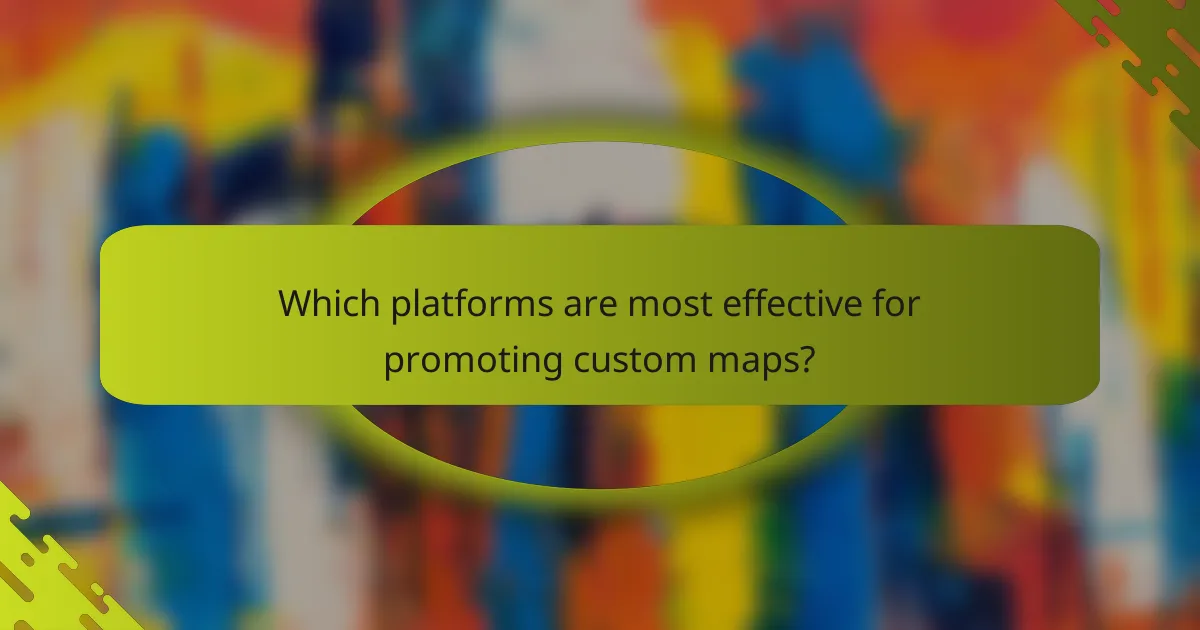
Which platforms are most effective for promoting custom maps?
Instagram, Facebook, and Twitter are among the most effective platforms for promoting custom maps, each serving unique purposes. Instagram excels in visual appeal, Facebook fosters community interaction, and Twitter provides instant updates, making them complementary tools for map promotion.
Instagram for visual storytelling
Instagram’s visual-centric platform is ideal for showcasing custom maps through high-quality images and engaging stories. Users can leverage features like posts, stories, and reels to highlight map details, share behind-the-scenes creation processes, and demonstrate practical applications.
To maximize impact, use relevant hashtags and geotags to reach a broader audience. Engaging with followers through comments and direct messages can also enhance visibility and foster a loyal community interested in your maps.
Facebook for community engagement
Facebook is effective for building a community around custom maps, allowing users to create dedicated groups or pages. These spaces enable map enthusiasts to share experiences, ask questions, and provide feedback, creating a sense of belonging.
Consider hosting live Q&A sessions or sharing polls to encourage interaction. Regularly posting updates and engaging with group members can help maintain interest and drive discussions about your maps.
Twitter for real-time updates
Twitter is best for sharing quick updates and engaging with your audience in real time. Its fast-paced nature allows for immediate feedback and interaction, making it suitable for announcing new map releases or changes.
Utilize threads to provide context or detailed information about your maps, and engage with trending topics to increase visibility. Regularly interacting with followers can help build a network of supporters who are eager to share your content.
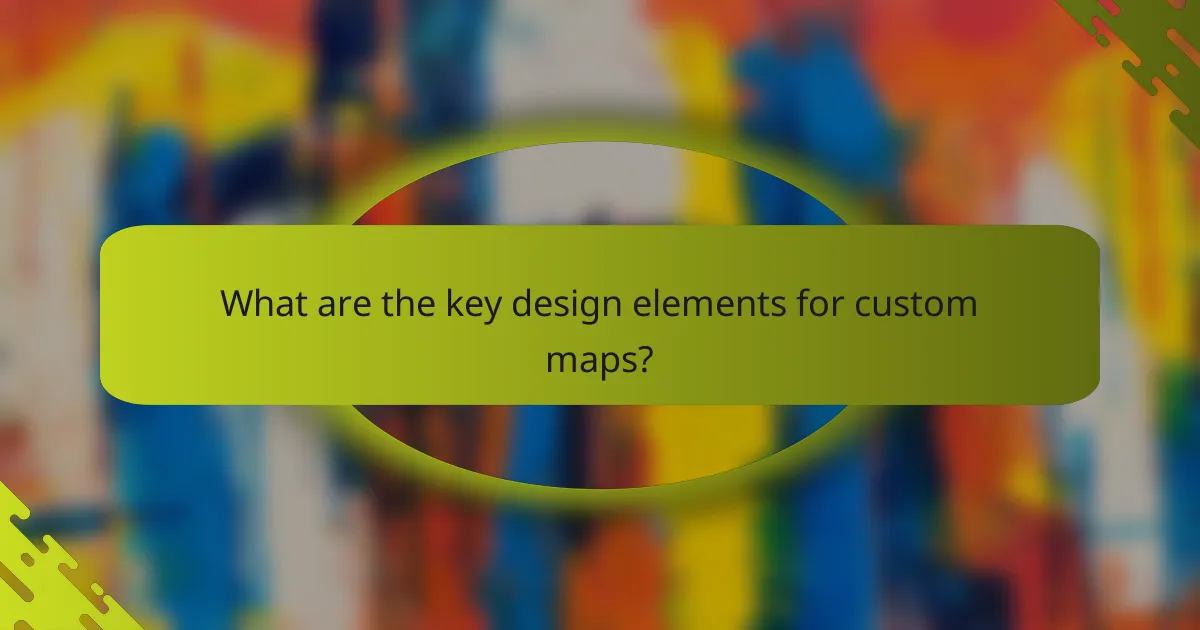
What are the key design elements for custom maps?
The key design elements for custom maps include typography choices, iconography and symbols, and layering techniques. Each element plays a crucial role in enhancing the map’s readability and visual appeal, ensuring that users can easily interpret the information presented.
Typography choices
Typography is vital for conveying information clearly on custom maps. Selecting the right font style, size, and weight can significantly impact legibility. For instance, sans-serif fonts are often preferred for their clean appearance, while larger sizes enhance visibility, especially on mobile devices.
Consider using a limited number of font types to maintain consistency. A common practice is to use one font for headings and another for body text. Ensure that the chosen typography aligns with the map’s theme and purpose, whether it’s for tourism, navigation, or educational use.
Iconography and symbols
Iconography and symbols are essential for representing various features on custom maps. Using recognizable icons helps users quickly identify landmarks, services, or points of interest. For example, a fork and knife icon typically indicates restaurants, while a bed symbol denotes accommodations.
When designing icons, aim for simplicity and clarity. Avoid overly complex designs that may confuse users. Additionally, consider color-coding icons to enhance differentiation between categories, such as using green for parks and blue for water bodies.
Layering techniques
Layering techniques involve organizing map elements to create depth and clarity. Effective layering can help highlight important features while minimizing visual clutter. For example, using semi-transparent layers can allow users to see underlying data without overwhelming them.
When applying layering, prioritize the most critical information, such as main roads or significant landmarks, at the top. Secondary details, like minor streets or less important features, can be placed in lower layers. This approach ensures that users can focus on essential elements without distraction.
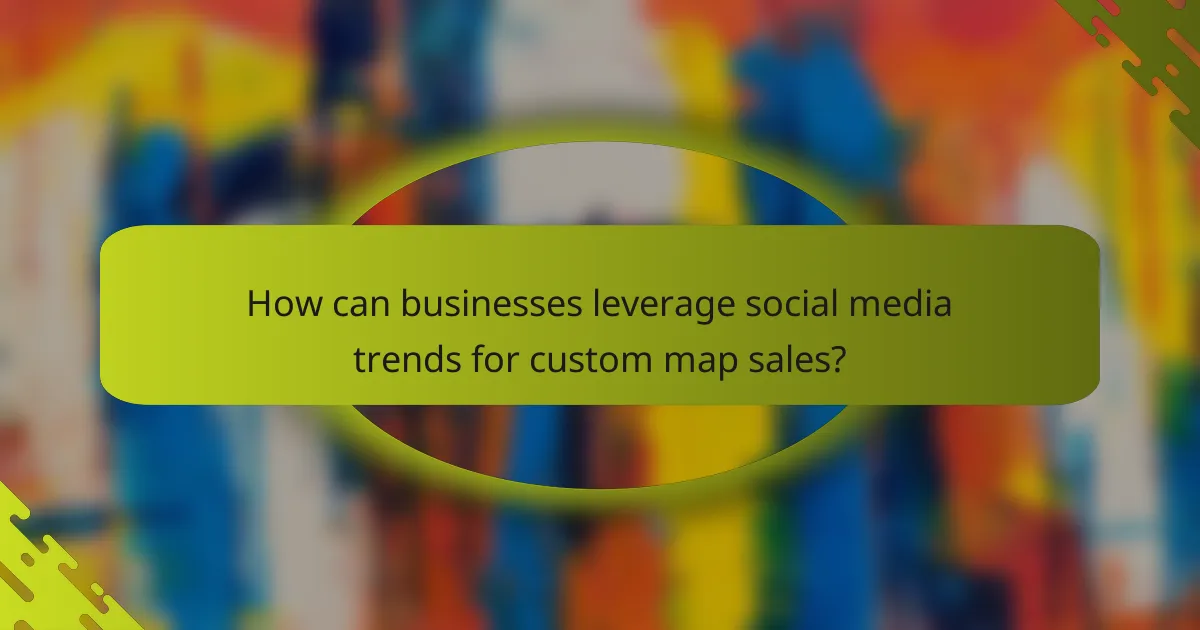
How can businesses leverage social media trends for custom map sales?
Businesses can effectively leverage social media trends by aligning their custom map offerings with popular themes and aesthetics that resonate with their target audience. By staying attuned to current trends, companies can create visually appealing maps that attract attention and drive sales.
Collaborations with artists
Partnering with artists can enhance the aesthetic appeal of custom maps and tap into the artist’s existing fan base. Businesses should seek out local or trending artists whose styles align with their map designs to create unique, limited-edition products.
For example, a business could collaborate with an illustrator known for vibrant cityscapes to produce a series of maps featuring artistic interpretations of urban areas. This not only diversifies product offerings but also generates buzz on social media platforms.
Seasonal promotions based on trends
Seasonal promotions can capitalize on current trends to boost sales of custom maps. Businesses should analyze social media to identify popular themes during specific times of the year, such as holiday-themed maps or summer travel guides.
Offering discounts or special editions during peak seasons can attract customers looking for unique gifts or travel planning tools. For instance, a company might release a festive map of local attractions during the winter holidays, promoting it through targeted social media campaigns.
Targeted advertising strategies
Implementing targeted advertising strategies on social media can significantly enhance the visibility of custom map products. Businesses should utilize demographic and interest-based targeting to reach potential customers who are likely to appreciate their map designs.
Using platforms like Facebook and Instagram, companies can create visually engaging ads that showcase their maps in use, appealing to specific audiences such as travelers, educators, or local enthusiasts. Regularly analyzing ad performance helps refine strategies and maximize return on investment.
